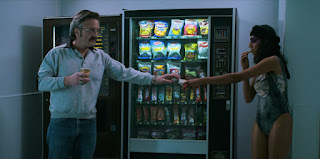In a 2014 article, Neil Gaiman wrote painfully and honestly about the late Terry Pratchett. Gaiman sought to dispel the idea of the “jolly elfin” persona that so many foisted on Pratchett. In the essay, Gaiman recalled a promotional tour with Pratchett and the elder author’s epic meltdown over bad directions and tight schedules.
“He sat in the back of the cab beside me white with anger, a nondirectional ball of fury…”
Far from an attack on fan-cherished memory or a come-uppance for the old man, Gaiman sought to impart a simple truth: the anger that wounds and destroys us can also, when properly harnessed, fuel creativity.
The source of the anger seldom matters. Indeed, as Gaiman reports, Pratchett was deeply wounded by personal slights but he was just as triggered by the mundane, even petty affronts of every-day life. There is no allegory or pseudo-psycho analysis here. Pratchett himself raged to Gaiman that his anger fueled his staggering output.
I rage at the imminent loss of my friend. And I think, “What would Terry do with this anger?” Then I pick up my pen, and I start to write.
As should we all. Are we not all dissatisified, indeed, angry with 'how things are'? If not angry, why else would we write? Sure, it may be fantasy with wizards and warriors or sci-fi with spaceships and robots or even new-west-noir crime by which we travel but we write to convey our anger with the "unfairness of it all” or to actualize “how it should be.”
In 2004 I stumbled into Inprint Houston and my first crit group. The folks in the group were a swell bunch of varying talent and commitment. Ironically, one of the more talented writers was also one of the most frustrating to read. They deftly described our city—a place where people come to work but not to play, where no one wants to live—in loving detail with the eye of a life-long resident. Their characters were equally, lovingly rendered and the set up for the romance was delightful.
But there was no heat. Not a word of disagreement. Not a single point of personal conflict.
Indeed, the inciting moment was a matter of inconvenience, a man displaced from his home under benign circumstances who makes a deal to rent a room from a divorcee who needs remodeling work done on her fixer-upper. It was a well-crafted “meet cute.” It was also DOA for lack of conflict, despite all the delicious conflict potential.
If I remember correctly, my overly-blunt critique was something like, “Everyone is too polite and giving of their resources/time. Get out of Texas and get rude.” That writer declined to share anything for the remainder of the semester.
Yeah, I’m a “hoot” at parties, too.
The simple truth is, work must have some heat. The best source of that heat is something original to the writer.
It’s been widely written how twelve-year-old Octavia Butler found herself thoroughly disappointed with Devil Women of Mars, (NOT a Merchant Ivory production) and how she wrote her own story in response. It’s a cute tale, very palatable to sensitive audiences. What’s less written is that the paralysis-shy black woman was OUTRAGED at the two-dimensional depictions, the total lack of ANYONE of color, and the general waste of the viewer’s time.
Even less widely written is how that same child accompanied her housekeeper mother to work, getting a face full of injustice at the business end of “use the back door” segregation. As an adult, Ms. Butler would stoke those fires, that sense of injustice, indeed, those feelings of RAGE for her brutally honest story of survival and individual reconciliation, Kindred.
Unable to find herself in other people’s stories, (or even baseline respect for people who looked like her) Ms. Butler would continue to tap the vein of anger and injustice. Over a 35-year career, the grand master of science fiction wrote her stories simply to say something in a society content with "the way things are."
But the writer doesn’t have to have a personal wounds from institutional discrimination or generational injustice. We all have our individual experiences as target—or abuser. Your experience, your anger may stem from a sibling rivalry. It may spring from the first wound (emotional or otherwise) you sustained in a relationship. Or it may boil from your deep shame at the harm you caused, the pain you inflicted, the wrong your committed.
Or, it may "simply" originate from life-long challenges in a world that does not comport with your expectations. Either/or, that anger is a gold mine of conflict to fuel your story. That anger can drive not only conflict in a romance novel but fuel any number of relationships that should be. It works in any genre.
“The crowd that applauds your coronation is the same crowd that will applaud your beheading.” Terry Pratchett, Going Postal
See, the anger doesn’t just rage and burn. Like the ironsmith’s fire, anger can be harnessed to hone a thin, delicate blade, a tool specially forged to uncover the healthy tissue from the abscess of injustice or the rot of lies. As cynical, even jaded as the quote above reads, it springs from the same anger that fired the shaping of incredible optimism and loving encouragement.
“Real stupidity beats artificial intelligence every time.” Terry Pratchett, Hogfather
The writer, above all others, has a strong dissatisfaction with reality. Embrace your anger. Exploit it, even. It will fire and fuel and polish your creation.
The image at the top "Kindred" promotional still is the property of Hulu, et al and it's use here, for educational/illustrative purposes, is covered by the Fair Use Doctrine.











